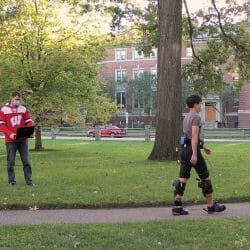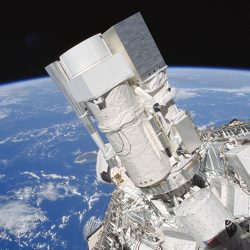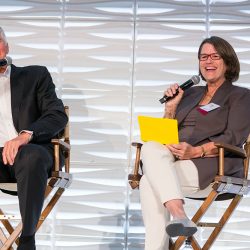Astro-Dermatology
Technique used by astronomers could help assess skin cancer.
As a young graduate student with a passion for surfing, Andy Sheinis soaked up a lot of California sun. But because of his youthful pursuit, Sheinis, now a UW professor of astronomy, is at high risk for melanoma, skin cancer that can turn deadly if not detected and treated in its earliest stages.
“I’m one of those people who has to be checked every six months,” he says. “About half the time I go in, they have to cut something off.”
A decade ago, during a visit to the dermatologist, it struck Sheinis that the same techniques astronomers use to parse starlight could be used to assess skin blots that may become cancerous. The system now most commonly used to evaluate worrisome moles is the human eye and the brain, Sheinis explains. Clinicians use the “ABCDE rule” — asymmetry, border irregularity, color, diameter, and evolving — to assess the cancerous potential of moles.
“They don’t take pictures of [moles] most of the time, which I found kind of surprising,” he says. “The success of this technique depends strongly on the training and experience of the dermatologist.”
At about the time Sheinis began regular screening for melanoma, he was building a hyperspectral imager, a device that samples the spectrum of light to tease information about the size and composition of celestial objects millions or billions of light years from Earth.
Working with Kevin Eliceiri ’96, MS’98 of molecular biology and biomedical engineering, Jack Longley ’75, MD’79 in dermatology, and Sharon Weber MD’93, professor of surgery, he’s conducting a study to determine whether hyperspectral imaging technology can also help assess moles for their potential to become cancerous. If so, it could present a quick, noninvasive, inexpensive means to identify worrisome moles and to accurately map their extent.
“The idea is to take this device from astronomy and apply it to melanoma,” says Eliceiri. “This is very new stuff. We don’t know if it’s going to work, but that’s why we want to try it.”
Published in the Fall 2011 issue



Comments
No comments posted yet.